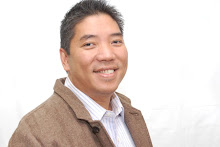By Ambeth Ocampo
Philippine Daily Inquirer
First Posted 01:31:00 09/19/2008
MANILA, Philippines—This Friday night there will be a gala dinner to jump-start the activities and, more importantly, raise funds for the biggest exhibition on the life and works of Fernando C. Amorsolo, who was declared the first National Artist of the Philippines in 1972. “His Art. Our Heart” is the catchy title of a series of shows in different venues and themes. For example, the Lopez Museum will draw from its collection and focus on Amorsolo as a graphic artist—from the illustrations to the famous series of “Philippine Readers” textbooks rand other prewar magazines to the Ginebra San Miguel label and Ivory soap advertisements. The Yuchengco Museum will concentrate on portraits. Other participating museums are the National Museum, the Vargas Museum, the Ayala Museum, National Museum and Lopez Museum—all covering different aspects of the artist’s life and work. When all these are put together, we will be able to see Amorsolo in a new light and perhaps appreciate him more.
It is hoped that the same attention will be given to the remaining National Artists.
If you go by the results of international art auctions, Amorsolo is a constant favorite. His paintings rarely go unsold. When a canvas is special for its rarity and technique, its price goes way beyond the estimates.
In 1919, Enrique Zobel commissioned Amorsolo to make copies of Francisco Goya’s “Maja Desnuda” and Velazquez’s “Don Fernando de Austria.” Things were more difficult in the age before the Internet and since these famous paintings were hanging in the Prado Museum in Madrid, Zobel paid for Amorsolo’s trip to Spain and sent him a monthly pension. I have yet to see these Amorsolo copies (I wonder if these survived World War II). After completing this commission and making some exceptional paintings and drawings of a nude Spanish woman, the artist visited major cities in the United States, including New York, Washington and San Francisco.
As a historian, I’m interested in researching Amorsolo’s notebooks and letters to know what he saw and what he experienced and try to relate these to his art. Naturally, his paintings, drawings, and sketches are worth a lot of money but his writings are just as important even if they don’t fetch the same astronomical prices.
Years ago, I wrote an essay about Amorsolo’s sketches of Manila during the war. These sketches form a visual and historical record of those dark days. And I hope that this great exhibition will yield materials previously unknown to art historians so we can enlarge our knowledge of Amorsolo and his world.
The National Museum has many pencil studies, some with notes on color and treatment that give us an idea of his technique and creative process. It is hoped that more papers will be found with his relatives, friends and contemporaries. There is a very revealing undated and incomplete letter he wrote to his friend Guillermo E. Tolentino that I’m sharing today. The original used to be in the possession of Paz Tolentino, but now it cannot be found after having been “borrowed” by someone who never returned it. The letter reads:
“Hindi rin ako nayamot sa tren gaya sa bapor ngunit ako’y masiadong nag-iisa kaya halos lahat ng aking mga kasama, nagsisilapit at minsan-minsan akong hinahanap. Mayroon tuloy akong nakilalang isang Ingles na may gustong pumunta sa P.I. [Philippine Islands] at dalawang Amerikano na doon ang tungo. Ang isa ay sundalo at madalas akong kinakausap ng Kastila at Tagalog. Ang unang tanong sa akin ay ang Sampaloc at ‘Mucho bueno ba ang puki Espanol?’
“Mayroon namang isang matandang Americano na sa dining coach ay kinausap ako agad ng Kastila. Nang sinabi ko na ako’y Filipino ay agad tinanong ako ng opinion ko about our independencia. Sina [not legible] siya na kung ako’y gagawing Presidente ay dapat na ngang maging independiente tayo ngunit kung hindi ay huwag nang ibigay kahit kelan. Sapagkat kung hindi rin ako gagawing presidente o emperador ay hindi mawawala ang partido ng mangkukulam.
“Bago kami makaraan ng Salt Lake ay nakakita ako ng mina at conejo.
“Ang hindi ko gusto ay ang aking pagtulog. Magbuhat Chicago hindi na ako nakatikim ng lower berth. Maraming Amerikanang magaganda ngunit walang libre banat.
“Kahapon ng hapon pinasial ko ang city sa bus. Nakita ko ang Cliff House, Golden Gate, Presidio, etc.
“Kaninang umaga higit na tatlong oras ako sa Museo sa Golden Gate. Very poor ang Museo. Dito pinapakilala ng Amerikano ang kanilang ignorance in art taste. Sa sculpture room wala akong napili kundi dalawa o tatlo (ang isa’y itong postal). Halos lahat na ay amanerado tila mga yari ng isang fabrica de marmol o escultura para restaurant o pangadorno sa mga salon de club.
“Tumagal lamang ako ng konti sa room ng last War at sa Spanish-American War. Dito ko nakita ng ilang nauukol sa Revolucion Filipina, etc.etc.
“Pag-alis ko sa Museo ay nabasa akong mabuti at gutom na gutom ako at natae ako ng matigas.
“Kamusta na lang sa kaluluwa mo. (Sgd) F.C. Amorsolo.”
I did not translate the above to give the reader a sense of Amorsolo’s familiar and rather earthy language. The reference to sex and stool is twice as vulgar in the original Tagalog. Writing on the back of a series of tourist or picture postcards, Amorsolo did not just tell us where he went but provided his opinion—a boon to any historian or biographer. Imagine what else research will uncover.
* * *
Comments are welcome at aocampo@ateneo.edu.
Friday, September 26, 2008
Subscribe to:
Post Comments (Atom)

No comments:
Post a Comment